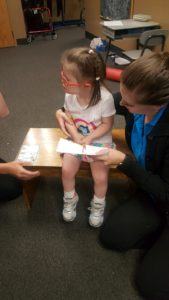Occupational Therapy
THERAPY IS PLAY!
Occupational therapy from a parent’s perspective: Why is the therapist playing with my child, and why am I paying for someone to play with my child when I could do this at home?
Occupational therapy from an OT’s perspective: How can I make this fun and purposeful, while giving this child a challenge?
OT’s have a method to their madness, a purpose to their play, an underlying skill to work on with every move. We just disguise therapy with play…because let’s face it…if a child thinks they are “working” they won’t be as motivated to participate!
Play is a child’s number one occupation; it is intrinsically motivating and FUN! What children don’t know? It is also a learning experience. Children are like sponges; as they interact with objects, their environment, and the people around them, they are soaking up all of the wonderful skills needed for future occupations such as being a student, completing chores, and playing with friends!
So…what’s the difference between play at home and play at therapy?
As occupational therapists introduce toys and play into their sessions, we are continuously looking for the just right challenge for your child. This means we are allowing them to learn new skills with our support, but without overwhelming them in the process. As we assess their skill level during play, we are also able to provide modifications to the activity and are able to grade the level of difficulty up or down based on your child’s specific ability.
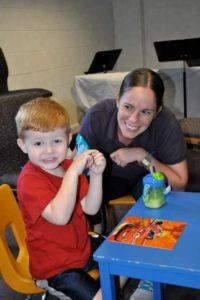
Examples of this could be: sitting on a therapy ball while playing a game to activate postural muscles, coloring on a vertical surface to improve shoulder stability, or using tongs to pick up game pieces rather than their hands for fine motor control and strengthening.
Each toy and activity used during therapy is specifically chosen to cater to the individual needs and abilities of your child. When choosing a toy or activity, some of the things occupational therapists consider are:
-What does their grasp or release on objects look like?
-How is their postural control and shoulder stability?
-Are their movements intentional and fluid, and are they able to move their arms and legs both individually and simultaneously?
-How are they manipulating, exploring, and interacting with the toys? Is their play purposeful and functional?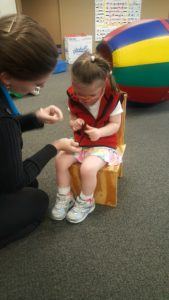
-Are they aware of their environment and the others around them?
-Are they able to follow multi-step directions?
This is just a glimpse into what play looks like from an OT perspective. That’s why we allow the last few minutes of our sessions for Q&A with you, the parents! We are a team, and we want you to understand the goals for your child, and the path to master those goals. The home exercise programs created for you and your child are imperative to seeing the most success. We encourage you to ask questions when you are uncertain about anything!
Read MoreWith Thanksgiving quickly approaching, do not let having a picky eater impact your time spent with family and friends. ABC Therapy would like to offer you these helpful feeding strategies to help reduce the stress during your Thanksgiving meals.
- Positioning– Children perform best when their feet are flat on a sturdy surface, eating surface is at waist level, and they’re able to reach all things in front of them.
- Variety– Offer an assortment of foods, both preferred and non-preferred options, but do not force your child to finish full amounts if they are unable.
- Volume- Offer small amounts of each food option so the child does not feel overwhelmed with the quantity on their plate. Children are more likely to try one bite of a new food than a whole helping.
- Choices- Offer numerous choices based on foods provided i.e “Would you prefer the corn or carrots on your plate?”
- Separate and Make it fun– Bring supplies like divided plates, a cupcake baking sheet, fun utensils, or different utensils for each food to help separate food item options.


- Messy Play– If your child is not willing to eat the foods, encourage describing the foods (color, texture, taste, etc.) and allow messy play so they can explore and interact with the options on their own terms. An example of messy play could be utilizing various cookie cutters to make playful shapes.
- Model– Demonstrate to your child what your expectations are with each food and how they should interact with it.
- Provide Praise but not Reward– Children feel accomplished when given praise like “I like how you took a bite out of ___”, “I see that you are trying hard to try ___”, “Good job touching ___”. However, providing a treat after eating a non-preferred food is not the best option for supporting carry over and independence in the skill.
- “All Done” bowl – Provide a safe place for the child to eliminate the foods from plate when they are finished to reduce overall anxiety.
- Back-up Plan– Pack the child’s f
 avorite foods in the case they are unwilling or unable to tolerate the foods provided.
avorite foods in the case they are unwilling or unable to tolerate the foods provided.
Hopefully these food-related strategies will help reduce stress for the whole family during the holiday season! Enjoy time with your family and don’t let picky eating impact the quality of time with loved ones. For more information pertaining to picky eating or other therapy-related resources, please visit https://www.abcpediatrictherapy.com/.
Happy Thanksgiving!
Read MoreKids LOVE Halloween…between dressing up, the decorations, parties, and of course the candy…what’s not to love? But let’s be honest, Halloween is definitely not the most sensory friendly holiday. For kids with sensory processing disorder, it can be a literal nightmare. From the itchy costumes, flashing lights, loud noises, and unexpected scares, the night of Trick-or-Treat can be really overwhelming for you and your child. Below are 6 ways to have a sensory friendly Halloween this year!
- The costume…perhaps the most important step that you can control! Some costumes are scratchy, come with face paint that can be sticky or slimy, masks that smell funny, or other head pieces, that can just be painful for kids with sensory issues. Take your child with you to the store to feel the costume and gage their reaction when they touch the costume. That will give you a good idea if they’d be able to tolerate it for a whole evening or not. You could also have them wear some of their most comfortable clothes under their costumes. Or focus on using some of their own clothing to make a unique costume, keep it simple like a cowboy or a cat! When in doubt, do a trial run a few days before to ensure their comfort…you’ll appreciate it later when you have avoided a meltdown.

- Practice, practice, practice! Set-up time for you and your family to practice Halloween etiquette. First start with your own home, where things are most familiar. Work on ringing the door bell, what to say/how to respond, and how to take the candy…that way they know what to expect and can learn the routine. Next practice at a family or friends house, where things are familiar. It’s much easier to practice on a familiar face than a stranger.
- Plan your Trick-or- Treat route ahead of time. Try to Trick-or-Treat at neighbors who know you and your kids if possible. It is always easier to go to familiar places with familiar people. And you will also feel comfortable asking them questions like: what kind of decorations they have in their yard. Or they will not get offended if your kiddo is getting overstimulated and does not say “thank you” or respond appropriately to a question.
- P
 lan your time accordingly. Going Trick-or-Treating earlier in the night can be helpful, as it is often less crowded initially. Your child may benefit from a picture schedule, timer, or checklist so they know what to expect! Incorporating “break” times in which they can go back to the house or into your car, can help sensory overload. Be aware of your child’s warning signs that they might be getting overstimulated.
lan your time accordingly. Going Trick-or-Treating earlier in the night can be helpful, as it is often less crowded initially. Your child may benefit from a picture schedule, timer, or checklist so they know what to expect! Incorporating “break” times in which they can go back to the house or into your car, can help sensory overload. Be aware of your child’s warning signs that they might be getting overstimulated. - Go to smaller events…Trunk-or-Treats, mall, and/or church events are becoming increasingly popular, especially for parents who work, thus limiting the time families can go Trick-or-Treating. These events tend to be for kids of all ages, so it could limit the number of scary masks or decorations you encounter. This will greatly reduce the amount of transitions for you to navigate as well! These events can get crowded, so be sure to call ahead, to see what times tend to be less busy or how many people they are expecting.
 Make your own Halloween Traditions. When all is said and done, there is no rule saying you have to participate in any of these activities. If they are too much, it’s simply too much! Take it in stride and create your own Halloween traditions, by making it a pizza or game night, do
Make your own Halloween Traditions. When all is said and done, there is no rule saying you have to participate in any of these activities. If they are too much, it’s simply too much! Take it in stride and create your own Halloween traditions, by making it a pizza or game night, do  your child’s favorite activity, or have a special Mommy or Daddy only date every year to make the holiday special in another way.
your child’s favorite activity, or have a special Mommy or Daddy only date every year to make the holiday special in another way.
I hope these recommendations help you and your child have a happy and safe Halloween! Be sure to visit our website for other fun tips and information www.abcpediatrictherapy.com
Read More
Here are some great tips to help improve your child’s handwriting:
1. Use a finger to space out your words if you are having difficulty with word spacing.
2. Participate in hand strengthening activities to increase hand strength and endurance. Some ideas of hand strengthening activities include: using theraputty and finding small objects hidden in it; or squeezing open a tennis ball with a slit cut in it to put small items inside (pictured below).

3. Practice appropriate letter formation by writing letters in shaving cream, pudding, sand, or other material. Using a variety of media to form letters can make writing more fun while improving letter formation.
4. Participate in fine motor coordination activities by hiding a small item in the palm of your hand (such as a penny or marble) and then bringing it out to the fingertips using the same hand. Try then to bring the item back into your palm in the same manner.
5. Lacing string through holes and stringing beads of different sizes onto string (the smaller they are, the more difficult) can help with fine motor coordination.
6. If letter size is difficult, highlight the top and bottom lines to have a visual boundary for the letters.
7. Try a pencil grip or a different type of pencil (longer, shorter, wider) to see if it improves handwriting.
8. Become your own editor – make a list of “rules” for handwriting and go back to check your own work. Some ideas of rules include: using capitals and punctuation, spacing between words, skyscrapers touch the sky and dirt diggers go under the ground, etc.
Written by: Hilary Lee, MPH, MS, OTR/L
If your child is having difficulty with handwriting, please reach out to your pediatrician for guidance. Occupational Therapists (OTs) at https://www.abcpediatrictherapy.com have the expertise to help your child. OTs love to teach parents how to help their children with handwriting.
Read MoreFall tree cutting activity:
- Cut a tree trunk and branches (different sizes of rectangles) out of brown construction paper and glue it onto another piece of construction paper (you can use blue for the sky or any other color you choose)
- Cut a strip of green paper and glue it under to bottom of the tree for grass
- Cut out strips of red, orange, and yellow paper
- Cut the strips into small squares for the leaves of the tree
- Scrunch the square pieces and glue them on the branches, the grass and the paper as leaves falling from the tree
Hang it up on the refrigerator or around the house for fall decoration!

 Skip to content
Skip to content
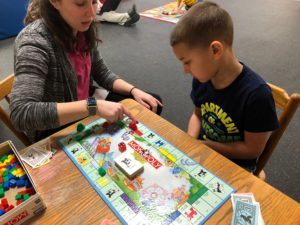
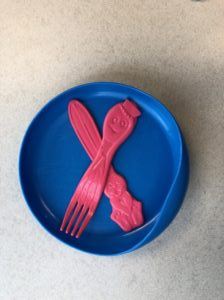
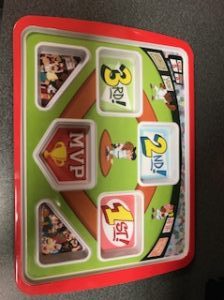
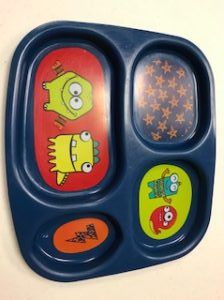
 avorite foods in the case they are unwilling or unable to tolerate the foods provided.
avorite foods in the case they are unwilling or unable to tolerate the foods provided.
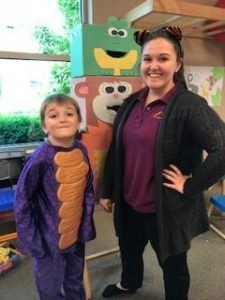
 lan your time accordingly. Going Trick-or-Treating earlier in the night can be helpful, as it is often less crowded initially. Your child may benefit from a picture schedule, timer, or checklist so they know what to expect! Incorporating “break” times in which they can go back to the house or into your car, can help sensory overload. Be aware of your child’s warning signs that they might be getting overstimulated.
lan your time accordingly. Going Trick-or-Treating earlier in the night can be helpful, as it is often less crowded initially. Your child may benefit from a picture schedule, timer, or checklist so they know what to expect! Incorporating “break” times in which they can go back to the house or into your car, can help sensory overload. Be aware of your child’s warning signs that they might be getting overstimulated. Make your own Halloween Traditions. When all is said and done, there is no rule saying you have to participate in any of these activities. If they are too much, it’s simply too much! Take it in stride and create your own Halloween traditions, by making it a pizza or game night, do
Make your own Halloween Traditions. When all is said and done, there is no rule saying you have to participate in any of these activities. If they are too much, it’s simply too much! Take it in stride and create your own Halloween traditions, by making it a pizza or game night, do 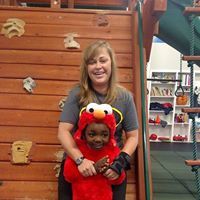 your child’s favorite activity, or have a special Mommy or Daddy only date every year to make the holiday special in another way.
your child’s favorite activity, or have a special Mommy or Daddy only date every year to make the holiday special in another way.
